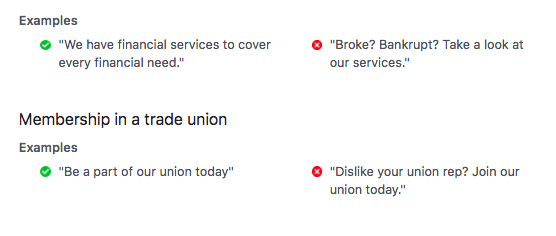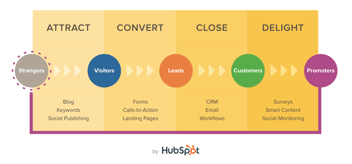Motivating people to take action is not an easy job. People are continuously weighing their options, teetering between their imagination and reality, between having and not having. This is why marketers are always shaping the way products and services are framed – catering to the emotional needs of uncertain buyers.
However, many companies employ psychologically manipulative tactics to drive consumer behavior. This is not the way to win hearts and minds! There are honest ways to use psychological marketing tactics that will attract consumers effectively AND ethically. (This is at the very core of the inbound marketing strategy.) Intelligent marketers know the difference. Here are a few examples.
DO: Be Authentic & Upfront
DON’T: Use targeted fear tactics
According to a study on consumer behavior, one psychological marketing tactic involves getting ideas across to consumers rather than selling something. One way to employ this would be to evoke a personal fear in which your product/service in the solution to. There is a fine line of ethical dilemmas involved in this approach, which may be one reason why Facebook recently banned this type of advertising across the platform. See example:

Good marketing inspires trust rather than fear. Your goal should be to attract consumers by being authentic and honest about your product/service. This, in return, will optimize your credibility. State the problem that your product or service solves, but don't embellish it. If you present clear information, followed by supporting claims (such as real testimonials), the facts should speak for themselves!
What does honest marketing look like? Read more about it here.
DO: Use Clever or Cute Visuals
DON’T: Objectify Women OR Men
Studies have shown that psychological appeals can resonate more with consumers than feature and function appeals. This is why you see brands capitalizing on sexual attraction to sell a completely unrelated product. However, there are long-term societal consequences of these depictions. (Here’s a recent study about the dilemmas with objectification, as example).
Instead, you can bring people joy by using cute or clever visuals. The cute factor fits in well with numerous marketing strategies such as the Inbound Marketing methodology, where the goal is to entertain and delight potential customers. It cuts through the noise to speak straight to human emotion. If done right, using the cute factor in marketing can both surprise and leave a lasting impression.
DO: Make Promotional Offers
DON’T: Have Hidden Fees
Running a limited time promotion can be a win-win situation. The consumer gets a good deal on a product/service and you get to see immediate results. This is also the perfect opportunity to create a sense of urgency and make the consumer feel like a winner. But remember that marketers should always mean what they say!
Don’t offer discounted prices just to end with hidden fees. This tactic is timeless, and its most recent incarnation can be found on travel booking sites — where you invest your time weighing decisions based on the base price, only to discover a “resort fee” or “destination fee” at final payment. I can tell you personally that this is one of the most infuriating tactics out there. Deception is the easiest way to dump a potential customer.
——
Bottom line, honest marketing is the best marketing. Pair that with consistent A/B testing, a solid brand narrative, and clear objectives – then you’re on the right track!








